Imagine stepping into your very own vibrant oasis, a sanctuary teeming with lush life and vibrant colors, all nurtured within the cozy confines of a greenhouse. Whether you’re a newcomer to the gardening world or a seasoned horticulturist, growing greenhouse plants at home can transform your gardening experience, providing you with year-round beauty and bountiful harvests.
The appeal of greenhouse gardening lies not only in its ability to extend growing seasons but also in its promise of a controlled environment where plants can thrive regardless of the weather outside. In this article, you’ll discover the essential steps to cultivating a thriving greenhouse, from selecting the ideal structure to mastering temperature and humidity control.
For beginners, we’ll demystify the basics of greenhouse gardening, offering straightforward advice on everything from plant selection to soil management. Meanwhile, experienced gardeners will find valuable insights into advanced techniques, such as optimizing light exposure and implementing effective pest management strategies.
Select Suitable Greenhouse Location
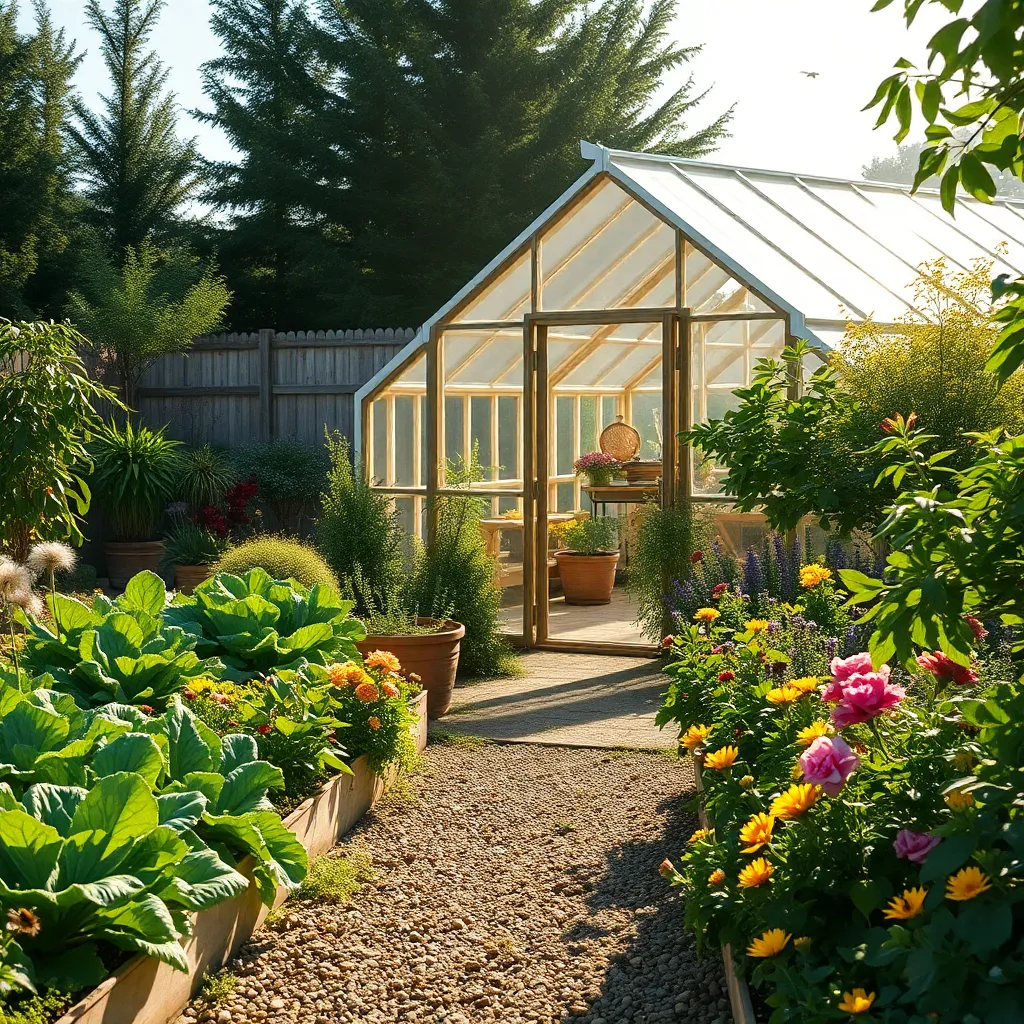
Choosing the right location for your greenhouse is crucial for the success of your plants. Begin by selecting an area that receives ample sunlight, ideally at least six hours of direct light daily, as this will ensure healthy plant growth.
Consider the orientation of your greenhouse to maximize sunlight exposure. Positioning the structure with its length facing east-west can help capture the most sunlight throughout the day, especially in winter when the sun is lower in the sky.
Drainage is another critical factor to keep in mind when selecting your greenhouse site. Avoid areas prone to waterlogging by ensuring the ground is level or slightly sloped, which will prevent standing water that can harm plant roots.
Wind protection is key to maintaining a stable environment inside your greenhouse. Utilize natural barriers like trees or shrubs or construct windbreaks to reduce the impact of strong winds, which can affect temperature regulation and damage the structure.
Access to water and electricity is important for maintaining optimal growing conditions. Ensure that your greenhouse location allows for easy installation of irrigation systems and electrical connections for heaters or grow lights, which are essential for year-round gardening.
Install Appropriate Ventilation System
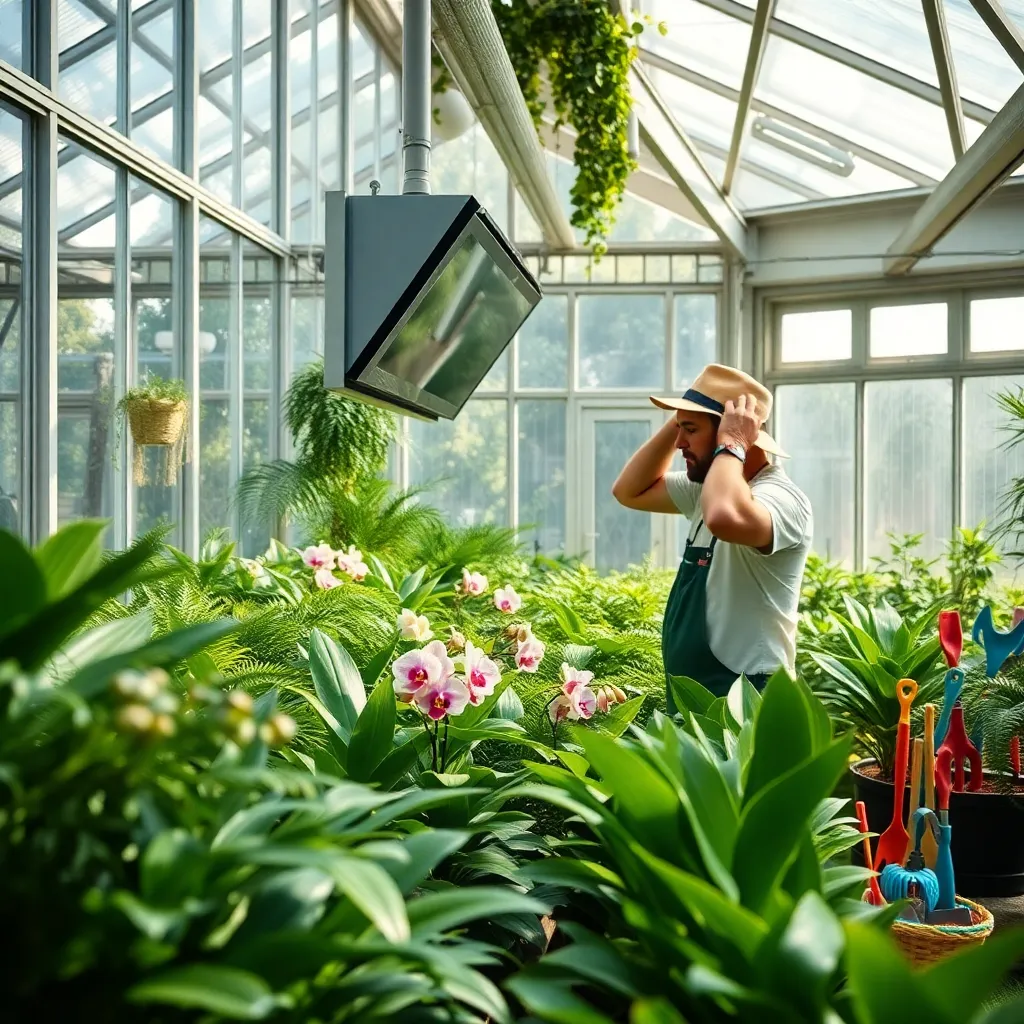
Ensuring proper ventilation in your greenhouse is crucial for maintaining a healthy growing environment. Without adequate airflow, plants can become stressed and more susceptible to diseases and pests.
To begin, consider installing adjustable vents on both the roof and sidewalls of your greenhouse. These vents allow for natural airflow, helping to regulate temperature and humidity levels effectively.
For those living in regions with variable weather conditions, investing in automatic vent openers can be a game-changer. These devices respond to temperature changes, opening and closing vents as needed without requiring manual intervention.
In addition to natural ventilation, many gardeners find that incorporating fans can significantly enhance air circulation. Oscillating fans are particularly effective as they distribute air evenly throughout the greenhouse, preventing hot spots and promoting stronger plant growth.
Advanced gardeners might consider integrating a ventilation system with their greenhouse’s climate control setup. This approach allows for precise adjustments, ensuring that your plants are always in optimal conditions regardless of external weather changes.
Remember, maintaining a balance between ventilation and insulation is key to thriving greenhouse plants. By taking these steps, you create an environment where your plants can flourish, leading to a more productive and enjoyable gardening experience.
Choose Compatible Plant Species
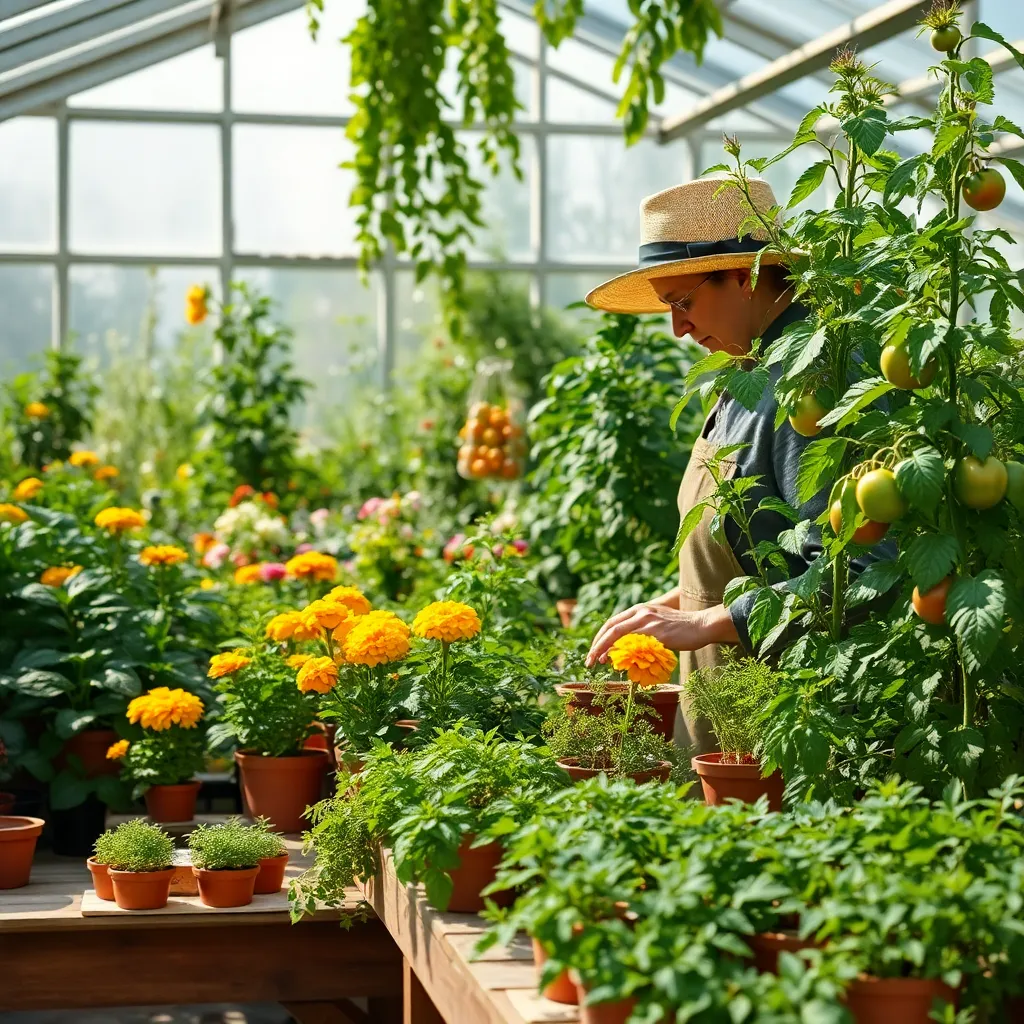
Choosing compatible plant species is essential for a harmonious and productive greenhouse environment. Consider the light, temperature, and humidity needs of each plant to ensure they thrive together in the confined space of your greenhouse.
Start by grouping plants with similar environmental requirements. For example, tomatoes and peppers both enjoy warm temperatures and full sunlight, making them excellent companions.
Additionally, think about the soil and watering needs of your chosen plants. Many Mediterranean herbs, like rosemary and thyme, prefer well-draining soil and less frequent watering, so they should be planted together.
For those looking to diversify, consider adding a few tropical plants that can benefit from the greenhouse’s controlled climate. Orchids and ferns can thrive in the humid conditions often found in greenhouses, provided they have adequate shade.
Finally, remember to rotate crops and adjust plant pairings as necessary to prevent the buildup of pests and diseases. By regularly assessing and reshuffling your plant selection, you can maintain a robust and healthy greenhouse environment.
Monitor and Control Humidity Levels
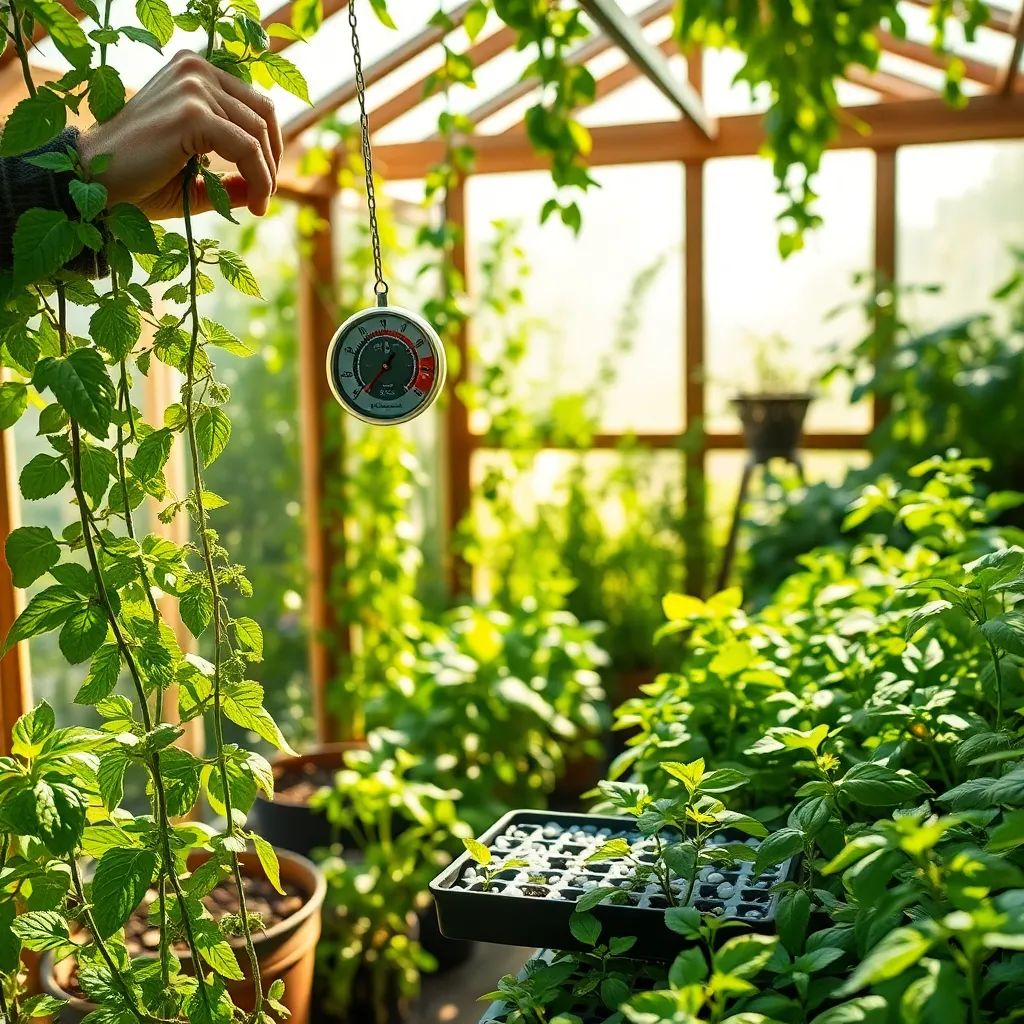
Monitoring and controlling humidity levels in your greenhouse is crucial for maintaining plant health. High humidity can promote fungal diseases, while low humidity can lead to dehydration and stress in plants.
Start by using a hygrometer to measure the humidity levels regularly, aiming for a range between 50% and 70% for most greenhouse plants. If you find that humidity levels are consistently outside this range, consider adjusting your ventilation or using humidity trays filled with water to increase moisture.
For beginner gardeners, it’s essential to understand that different plants have varying humidity needs. For instance, tropical plants like ferns and orchids thrive in higher humidity, whereas succulents and cacti prefer drier conditions.
Advanced gardeners might consider installing an automatic misting system to maintain consistent humidity levels, particularly during hot weather. Additionally, using a combination of fans and vents can help circulate air, preventing stagnant conditions that can lead to mold and mildew.
Remember to monitor your plants for signs of humidity stress, such as wilting or leaf drop, and adjust your humidity levels accordingly. By being attentive to these conditions, you can create an optimal environment that encourages healthy growth and vibrant blooms in your greenhouse.
Implement Regular Watering Schedule
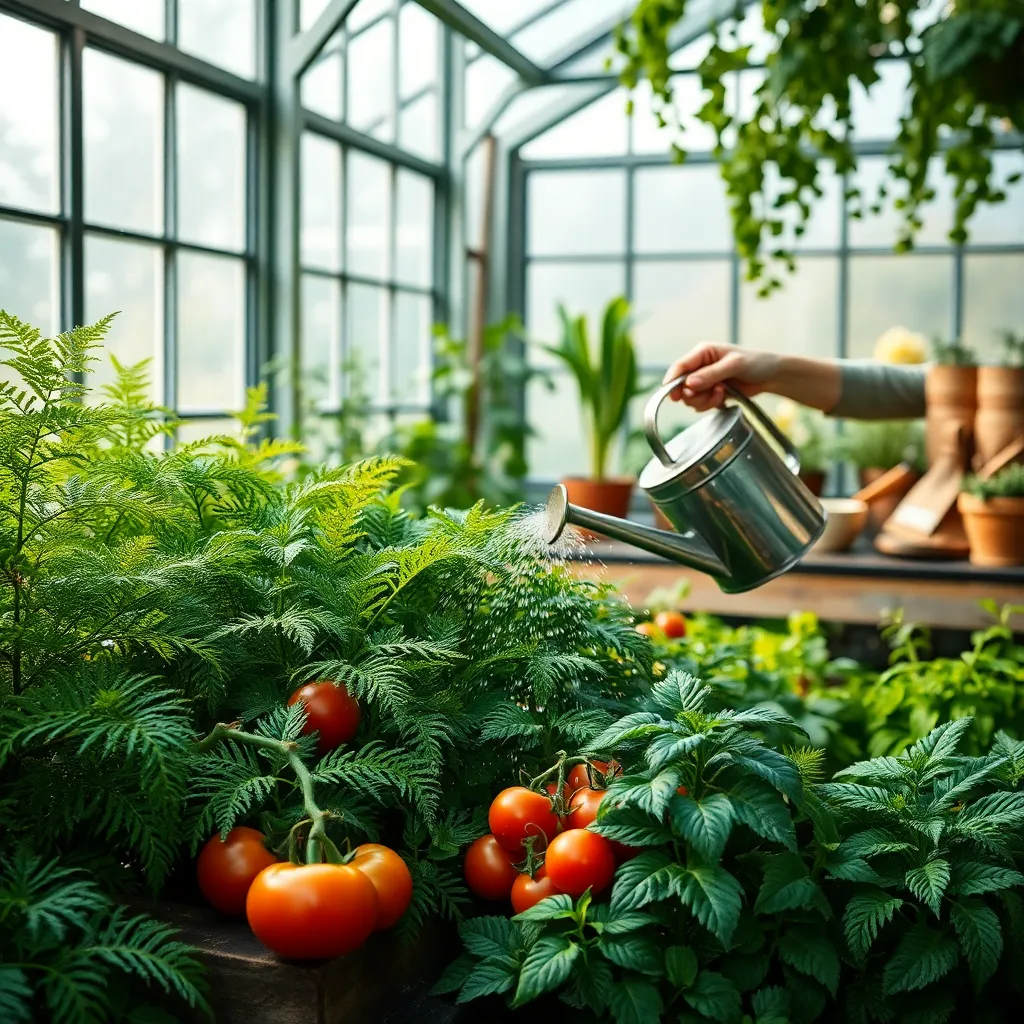
To ensure healthy growth, implementing a regular watering schedule is essential for greenhouse plants. Consistency in watering helps maintain optimal moisture levels in the soil, preventing both under- and over-watering issues.
Begin with understanding the specific needs of your plants, as different species have varying water requirements. Inspect the soil moisture by sticking your finger about an inch deep into the soil; if it feels dry, it is time to water.
For most greenhouse plants, a general rule is to water when the top inch of soil is dry. However, succulents and cacti require less frequent watering, typically needing water only every two to three weeks.
Advanced gardeners may consider installing an automatic drip irrigation system to ensure consistent watering. This system can be adjusted based on the season or specific plant needs, providing convenience and efficiency.
Conclusion: Growing Success with These Plants
In nurturing your greenhouse plants at home, we’ve explored five key relationship concepts that parallel the journey of cultivating a thriving connection. Firstly, understanding the importance of a solid foundation mirrors the need for rich, nutritious soil. Secondly, the role of consistent communication is akin to ensuring adequate sunlight and water. Thirdly, setting boundaries aligns with managing space and temperature for optimal growth. Fourth, adapting to change reflects adjusting care routines with the seasons. Lastly, celebrating small victories is like rejoicing in every new leaf or bloom.
As your actionable next step, choose one of these concepts to focus on this week with your partner or plants alike. Whether it’s improving communication or setting new boundaries, small steps can lead to significant growth. Bookmark this article now to have these insights at your fingertips whenever you need a gentle reminder.
Looking ahead, remember that just like plants, relationships flourish with patience, care, and attention. By integrating these principles into your daily life, you’re sowing the seeds for lasting success in your relationships. Embrace this journey and watch your connections grow stronger, fuller, and more vibrant with each passing day.
